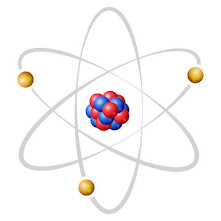Structure of the Atom Class 9 Notes
The central nucleus of an atom, which is surrounded by electrons, is what makes up an atom. Protons and neutrons, which are relatively hefty particles, are found in the nucleus.
Therefore, the three primary particles present in an atom are protons, neutrons, and electrons. The atom's nucleus is made up of protons and neutrons. The outermost region of the electron, where it is located, is called the electron shell.
Atomic Structure: Different Models
Since the discovery of atoms, numerous innovative theories have been created by renowned scientists.
Here is a list of the main theories regarding atomic structure.
The Thomson Model
Apparently, J. J. Thomson, since electrons are entangled in the sphere like currants, the structure of an atom is similar to that of a Christmas pudding.
He suggested that
A positively charged sphere with contained electrons makes up an atom.
An atom is electrically neutral because the protons and electrons in it have similar masses.
Rutherford Model
In an experiment, Rutherford irradiated a gold foil with alpha ()-particles.
Based on his observations of the alpha ()-particles' path after passing through an atom, he created a number of postulates for the experiment, including:
- Most of the space in an atom is void since the particles quickly passed through the gold foil.
- The nucleus, which is the positively charged centre of the atom, contains all of an atom's mass. The nucleus was attacked by 1,800 particles before they were deflected.
- The path the electrons take as they orbit the centre is known.
- In comparison to the size of the complete atom, the nucleus is small.
Through an experiment involving the scattering of alpha ()-particles on gold foil, Rutherford developed these hypotheses.
Read more about



Comments
Post a Comment
Thank you we will contact ASAP.